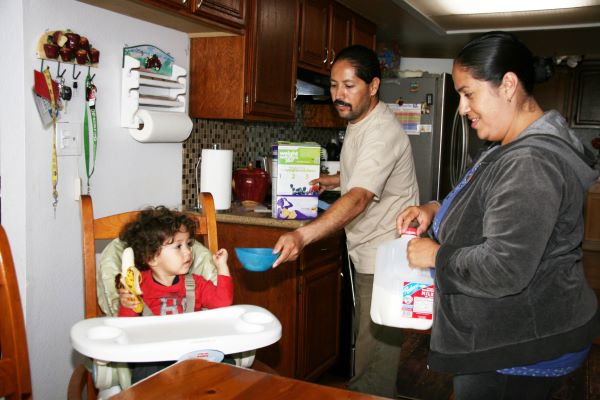 Staff’s professional development related to children with special health care needs includes training on:
Staff’s professional development related to children with special health care needs includes training on:
- Procedures for early and ongoing identification of CSHCN
- Implementation of the IHP and impact on daily activities
- Plans for safe and inclusive care
- Systems for effective communication within the program, and with families and health care providers
- Support for the family
Intentional professional development for staff can strengthen their confidence and self-efficacy in the care of CSHCN. Ongoing support helps staff feel less anxious about managing children’s health conditions.
Tips and Strategies for Professional Development for Staff
- Use the IHP as a resource for regular and substitute staff to make sure that those who care for the child know about special health care needs, accommodations, and medications.
- Engage other health professionals to support staff training, including:
- Child care health consultants.
- HSAC members.
- The child’s health care provider and their office or clinic. For example, a diabetes nurse educator may be able to work with the staff and family to help them understand an insulin pump or know how to recognize and treat high and low blood sugar.
- Services and organizations in the community.
- A nurse from the local health department can review an asthma-friendly classroom checklist and advise on strategies to lessen exposure to asthma triggers.
- Organization for a specific chronic health condition (e.g., Epilepsy Foundation) can provide condition-specific advice for caretakers.
- Training and professional development should include:
- Return demonstrations to make sure the staff understand a procedure. This consists of someone showing the staff how to do a procedure and the staff demonstrating the procedure back to the trainer.
- Discussion on how the child’s health condition may affect the daily schedule. For example, a child with diabetes may need special support before meals, or they might need to carry a snack with them during physical activities.
- Management of a medical emergency.
- Preparedness and management of CSHCN during emergencies that need evacuation or lockdown.
- Expectations and the process for staff to communicate updates (e.g., the child’s health status, response to medication and treatment, frequency of symptoms) with the health manager, the child’s family, and health care and other service providers.
- Once staff are trained, set up a schedule for health staff or a child care health consultant to observe and check in with the staff members who are responsible for the child and carrying out the IHP.
- Set up regular times for staff to check in with the family, where staff and family can give an update on the child’s health and medications both at home and school.
- Use observations and updates to revise the child’s IHP and plan for more staff training where needed.
- Consider running drills to identify challenges and maintain skills.
Collaborating with Families
 Health managers, disabilities managers, classroom teachers, and family engagement staff can support families with children with special needs. Ongoing, collaborative communication with families is crucial. Families know their child and the child’s condition best. For a child with an allergy, the family can share how to evaluate food products for safety, what words the child uses when they feel symptoms starting, and what their experience has been with their condition. This is just one example.
Health managers, disabilities managers, classroom teachers, and family engagement staff can support families with children with special needs. Ongoing, collaborative communication with families is crucial. Families know their child and the child’s condition best. For a child with an allergy, the family can share how to evaluate food products for safety, what words the child uses when they feel symptoms starting, and what their experience has been with their condition. This is just one example.
It is important to communicate with families in culturally and linguistically responsive and appropriate ways. This helps build and strengthen the partnership between the program and the family, which supports the family’s active involvement in their child’s care.
Families are an essential bridge with the child’s health care providers. The health manager can ask the family to share any staff concerns with the child’s health care providers. For example, a child with asthma may cough more during outdoor play time and need to use their inhaler. This information is critical for the family to tell the health care provider, who decides how to manage the child’s asthma. The health manager can also check in with the family after health care visits to find out if there is any new information to share with the staff. As another example, a child with seizures may have their medication changed. During that time, the child may have symptoms from the medications that the program staff should know about.
Families may benefit from the program’s connection to health resources and information. Learning about a new diagnosis may be a scary and challenging time for the family. Health managers can support their understanding of the condition and help them find health care providers, health supports, and information. Family service staff and health managers may also be able to support families in getting services (e.g., transportation, health insurance, housing) to meet the needs of the child and family.
Resources for Collaborating with Families
- Engaging Families of Children with Disabilities
- Family Voices
- Family Engagement
- Center for Inclusive Child Care: Parents, Grandparents, and Caregivers
- Working with Families of Children with Special Needs
- Parents Helping Parents
Read more:
Resource Type: Article
National Centers: Health, Behavioral Health, and Safety
Audience: Directors and Managers
Last Updated: October 25, 2023